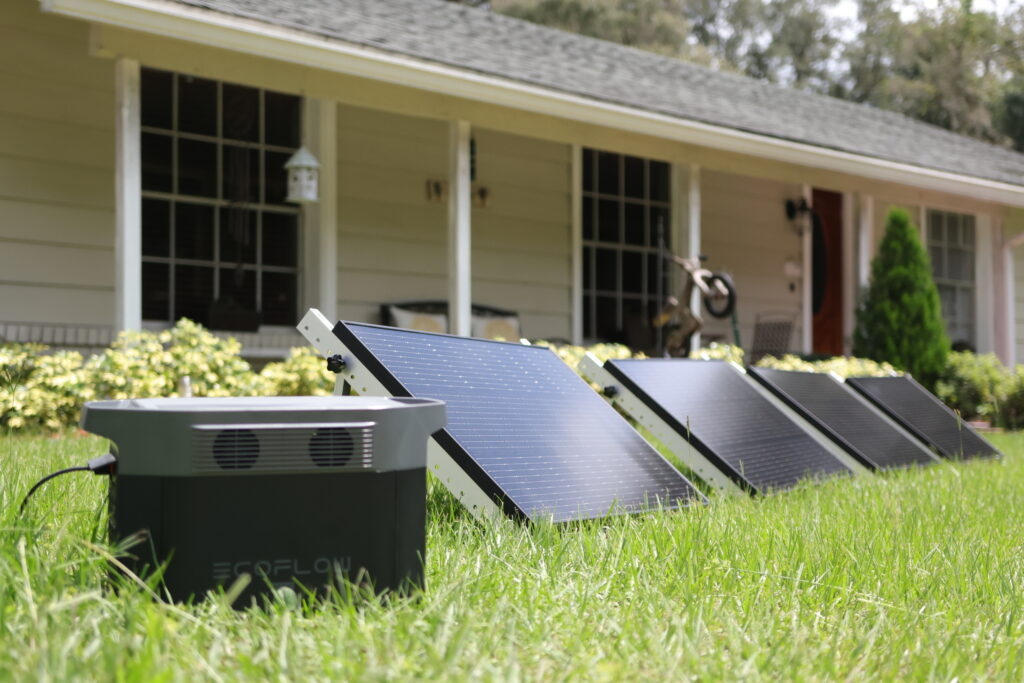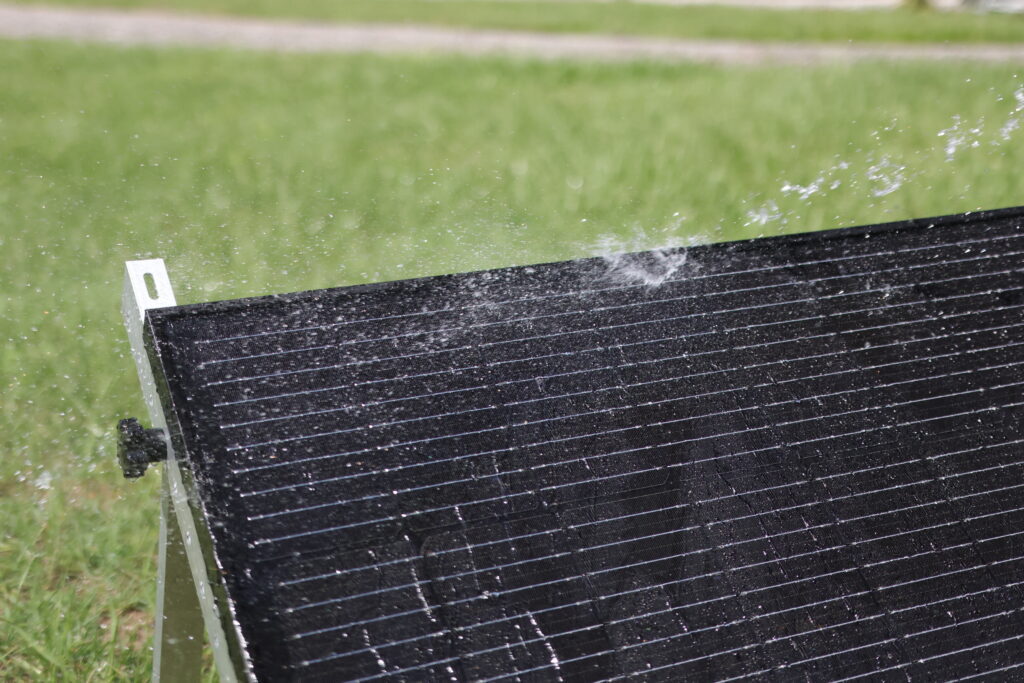Table of Contents
As the tide turns towards sustainable living, backyard solar panels are emerging as a key player in the renewable energy landscape. These ground-mounted systems offer homeowners the freedom to harness solar energy without the constraints of rooftop installations. With the ability to optimize for sun exposure, backyard solar panels not only exemplify energy independence but also signify a commitment to environmental stewardship.
Types of Backyard Solar Installations
When it comes to solar energy, one size does not fit all. Backyard solar installations offer diverse configurations, each tailored to specific needs and spatial arrangements. From ground-mounted arrays to innovative pole-mounted systems, the versatility of these installations makes solar power accessible to more homeowners.
Ground and Pole Mounted Systems: A Comparative Overview
Ground-mounted solar panels are a popular choice for spacious backyards. These installations lie flat on the ground or are slightly tilted to capture maximum sunlight. On the other hand, pole-mounted systems elevate the panels off the ground, which is particularly beneficial in areas with shading issues or limited ground space. Both types offer distinct advantages in terms of energy efficiency, maintenance, and installation.

Portable Solar Panels: The Flexible Alternative
For those seeking a more flexible approach, portable solar panels are an excellent option. These panels can be moved around to catch the sun at its peak, making them ideal for temporary setups or for use in multiple locations. Portable panels are especially useful for outdoor activities, providing a reliable power source for camping, RVs, or garden sheds.
What Are the Pros and Cons of Ground-Mounted Solar Panels?
When considering backyard solar panels, it’s essential to weigh the advantages and disadvantages. Ground-mounted solar panels offer distinct benefits, but also come with their own set of challenges.
Advantages: Maximizing Solar Energy
One of the biggest advantages of ground-mounted solar panels is their flexibility in placement and orientation. This adaptability ensures optimal sun exposure, leading to higher efficiency and more energy generation compared to some rooftop systems. Additionally, ground panels are easier to access for maintenance and repairs, which can prolong their lifespan and ensure consistent performance.
Disadvantages: Spatial and Financial Considerations
However, ground-mounted systems require significant space, which can be a constraint for homeowners with limited yard area. They also tend to be more expensive than rooftop installations due to the need for additional framing and support structures. The installation process can be more invasive and time-consuming, potentially impacting the landscape of your property.
Here’s a comparison table that includes standard ground-mounted, pole-mounted, and portable solar panels:
| Type | Advantages | Disadvantages |
| Standard Ground-Mounted | – Optimal sun exposure – Easier maintenance – Flexible placement | – Requires more space – Higher installation costs – Potential landscape impact |
| Pole-Mounted | – Elevated for better sun capture – Less ground space required – Can integrate tracking systems | – More complex installation – Higher costs per watt – Requires sturdy anchoring |
| Portable Solar Panels | – Highly flexible and movable – Ideal for temporary setups and outdoor activities – No installation required | – Limited energy generation – Less stable and more prone to damage – Regular repositioning needed for optimal sun exposure |
Pre-Installation Considerations for Ground Mount Solar Systems
Delving into the prerequisites for installing a ground mount solar system is critical for homeowners. This stage is key to ensuring that the solar setup meets both spatial and energy requirements efficiently. A crucial initial step is to assess the suitability of your backyard for solar ground mounting. This includes evaluating the size and sun exposure of the potential installation area. Factors such as shading, space orientation, and the sun’s path play a significant role in the effectiveness and efficiency of the solar panels.
How to Install Ground-Mounted Solar Panels?
The process of setting up ground-mounted solar panels involves several detailed and critical steps. It’s a journey from selection to activation, requiring careful planning and execution.
Essential Equipment for Ground Solar Mounting
This part of the article will outline the necessary components for a ground solar mounting system. The focus will be on the selection of appropriate solar panels, inverters, and mounting hardware, tailored to the specific energy needs and environmental conditions of the site.
Step-by-Step Guide to Ground Mount Solar Panel Installation
A comprehensive guide will walk the reader through the installation process for ground-mounted solar panels. Key stages include site preparation, panel installation, electrical connections, and compliance with local safety regulations and building codes.
Cost Analysis and Potential Savings with Backyard Solar Panels
Delving into the finances of solar energy is vital for understanding both the initial costs and the potential long-term savings. This section aims to give a clearer picture of what to expect when investing in backyard solar panels.
Upfront Costs Versus Long-Term Benefits of Solar Ground Mount
The initial investment for a solar ground mount system can range significantly, depending on the system’s size and complexity. Homeowners might expect to invest anywhere from a few thousand to several tens of thousands of dollars. Despite this substantial upfront cost, it’s crucial to consider the long-term benefits such as significant savings on energy bills, potential tax credits, and an increase in property value. A thorough understanding of these financial aspects is key to making an informed decision about solar energy investment.
Comparing Backyard Versus Rooftop Solar Costs
The initial costs and long-term savings can differ between backyard and rooftop solar installations. Ground-mounted solar systems, while potentially more expensive up front, can offer greater efficiency and energy output over time compared to rooftop installations.
Regulatory Compliance and Permissions
Navigating the legal aspects of solar panel installation is crucial to ensure compliance with local regulations. This section guides homeowners through the process of securing necessary permissions for hassle-free installation.
Understanding Local Solar Installation Regulations
Each region has its own set of regulations governing solar panel installations. It’s important to understand these local requirements, which may include zoning laws, building codes, and homeowners association rules. Researching and adhering to these regulations is vital for a lawful and smooth installation process. Obtaining the right permits is a critical step in the solar installation process. This might involve submitting detailed plans, undergoing inspections, and paying associated fees.
Best Ground-Mounted Solar Panels
EcoFlow 100W Rigid Solar Panel
Ideal for compact backyard setups, the EcoFlow 100W Rigid Solar Panel combines efficiency with a sleek design. Weighing approximately 6.2 kg and measuring 98×58.6 x 3 cm, it offers a rated power of 100W. Its monocrystalline cells ensure reliable energy generation, making it suitable for smaller backyard spaces or as an addition to an existing solar system.

Pros
- Lightweight and compact, perfect for small backyards.
- Efficient energy conversion for its size.
Cons
- Limited to smaller energy needs due to its 100W capacity.
EcoFlow 400W Rigid Solar Panel
The EcoFlow 400W Rigid Solar Panel is a powerhouse for more extensive backyard solar installations. With an impressive efficiency of 23% and a robust build, it’s designed to meet higher energy demands. The panel’s dimensions are 172.2×113.4×3.5 cm, and it weighs 21.8 kg, making it a substantial yet manageable addition to your backyard solar setup.
Pros
- High power output, ideal for larger energy needs.
- Monocrystalline cells ensure high efficiency and long-term reliability.
Cons
- More significant and heavier, requiring careful consideration of space and mounting.
EcoFlow 400W Portable Solar Panel
The EcoFlow 400W Portable Solar Panel combines high efficiency with flexibility, making it an excellent choice for dynamic backyard setups or for homes that require movable solar solutions. This panel is ideal for backyards that have varying sun exposure throughout the day or for multi-use spaces.
Pros
- High power output in a portable form, offering flexibility for different backyard layouts.
- Versatile design, easy to reposition as needed to optimize sun exposure.
Cons
- The premium features and portability come at a higher price point.
Conclusion
Embracing backyard solar panels, like the efficient EcoFlow 100W and 400W Rigid Solar Panels, marks a pivotal step towards sustainable living. This transition not only reduces reliance on traditional energy sources, significantly lowering utility bills but also demonstrates a commitment to environmental stewardship. By adopting solar power, homeowners gain energy independence and contribute positively to a greener future.
